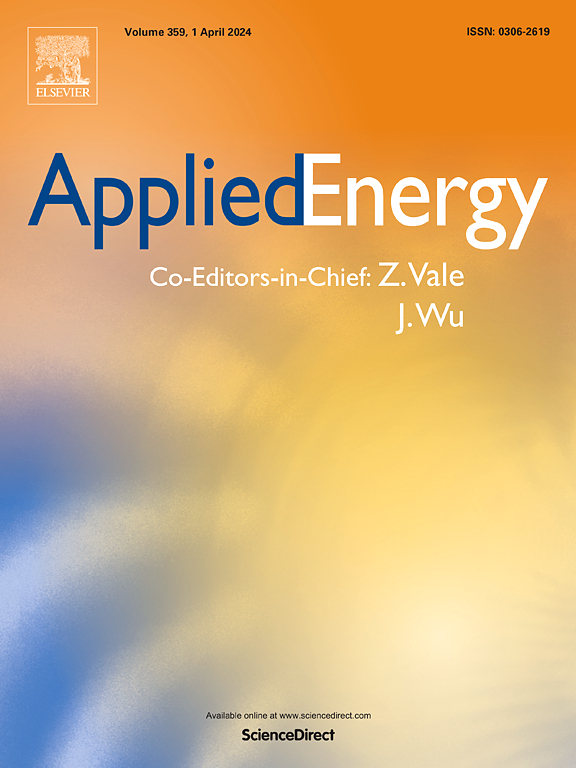Effect of cold welding on the inconsistencies and thermal safety of battery modules based on a constructed discharge model
IF 10.1
1区 工程技术
Q1 ENERGY & FUELS
引用次数: 0
Abstract
The thermal safety of battery systems is a common and key technical problem restricting industrial development. Welding is one of the most important electrical connection methods for lithium-ion battery groups, and the quality of welding directly determines the thermal safety of battery modules. In this research, the inconsistencies and thermal safety of cylindrical lithium-ion battery modules are studied based on cold welding technology. Secondly, the electrochemical characteristics and thermal runaway characteristics of the battery were experimentally studied. Finally, the battery (Table-Based) module launched by the SIMULINK tool of MATLAB software in 2018 was used to build a battery pack model simulating the discharge process to simulate and analyze the battery electrical characteristics. The relevant data show that the temperature difference between the batteries is less than 4 °C and the maximum battery temperature is less than 60 °C when the cold welded module is discharged at a current ratio(C) of 3 high rate, which has good temperature equalization and thermal safety. The output power is higher and the discharge energy increase by 3 % ~ 5 % when the cold-welded module is discharged at different rates. The results for heat abuse conditions show that the overall temperature rise of the cold-welded module is lower, the maximum temperature of the single battery is reduced by 10.7 %, and the maximum temperature rise rate is reduced by 41.2 %. The simulation results show that the current difference between the cells in the hot welding module is large, and there is an obvious overdischarge phenomenon in the late discharge period. The maximum SOC difference between the single battery of the cold-welded module is less than 0.02 when discharging at 3C. The requirements for SOC estimation are met. The above research results confirm that the relevant research will provide new ideas and theoretical value for the research of the consistency improvement of power battery packs, and solve the problem of the electrical/thermal balance difference of the existing resistance thermal welding process from another dimension based on the cold welding strategy.
基于构建的放电模型,冷焊对电池模块的不一致性和热安全性的影响
电池系统的热安全是制约工业发展的一个普遍而关键的技术问题。焊接是锂离子电池组最重要的电气连接方式之一,焊接质量直接决定了电池模块的热安全。本研究基于冷焊技术,对圆柱形锂离子电池模块的不一致性和热安全性进行了研究。其次,实验研究了电池的电化学特性和热失控特性。最后,利用MATLAB软件的SIMULINK工具2018年最新注册送彩金推出的电池(Table-Based)模块,建立了模拟放电过程的电池组模型,对电池电特性进行了仿真分析。相关数据显示,冷焊模块在3高倍率电流比(C)下放电时,电池温差小于4 ℃,电池最高温度小于60 ℃,具有良好的温度均衡性和热安全性。冷焊模块以不同速率放电时,输出功率较高,放电能量增加 3 % ~ 5 %。热滥用条件下的结果表明,冷焊模块的整体温升较低,单体电池的最高温度降低了 10.7%,最大温升速率降低了 41.2%。仿真结果表明,热焊模块电池之间的电流差较大,在放电后期存在明显的过放电现象。冷焊模块单个电池在 3C 放电时的最大 SOC 差值小于 0.02。符合 SOC 估算的要求。上述研究结果证实,相关研究将为动力电池组一致性改进研究提供新的思路和理论价值,并基于冷焊策略从另一个维度解决现有电阻热焊工艺的电/热平衡差异问题。
本文章由计算机程序翻译,如有差异,请以英文原文为准。
求助全文
约1分钟内获得全文
求助全文
来源期刊

Applied Energy
工程技术-工程:化工
CiteScore
21.20
自引率
10.70%
发文量
1830
审稿时长
41 days
期刊介绍:
Applied Energy serves as a platform for sharing innovations, research, development, and demonstrations in energy conversion, conservation, and sustainable energy systems. The journal covers topics such as optimal energy resource use, environmental pollutant mitigation, and energy process analysis. It welcomes original papers, review articles, technical notes, and letters to the editor. Authors are encouraged to submit manuscripts that bridge the gap between research, development, and implementation. The journal addresses a wide spectrum of topics, including fossil and renewable energy technologies, energy economics, and environmental impacts. Applied Energy also explores modeling and forecasting, conservation strategies, and the social and economic implications of energy policies, including climate change mitigation. It is complemented by the open-access journal Advances in Applied Energy.
 求助内容:
求助内容: 应助结果提醒方式:
应助结果提醒方式:


